Bioinspired Design and Experimental Validation of an Aquatic Snake Robot
Abstract
1. Introduction
2. Kinematics of Anguilliform Swimming
3. Design of the Robot
- Modularity: The main requirement is the correct reconstruction of the serpentine curve, which is influenced by the number and the length of the modules of the robot. To obtain a snake robot that is 1.3 m long, it is possible to reproduce its shape with eight equally long modules connected by rotational joints and one module for the head. This way, the serpenoid curve for the typical amplitudes and wavelengths of these animals is accurately reproduced, as shown in Figure 1. Moreover, modularity implies that broken modules can be easily replaced and that other modules can be added to the robot without modifying the existing structure.
- Distributed actuation. Each module is independent and includes a power source and an actuator so that the malfunctioning of one module does not totally compromise the functioning of the robot.
- Buoyancy. The robot is supposed to move on the water surface in two dimensions. Thus, its buoyancy should be finely tuned to make the robot slightly buoyant so that it remains on the water surface, but the buoyancy should be minimal so that all the lateral surface of the robot is submerged, in contact with water, and can generate thrust. Moreover, the center of gravity of each module should be at the bottom to avoid rolling over.
- Absence of external cover. The choice of not using any external cover is driven by the fact that if this cover is not perfectly adherent to the robot, it folds during movement, creating wrinkles that hinder the hydrodynamic shape of the robot and letting the modules move inside the cover without displacing the surrounding water, also reducing the effectiveness of thrust generation. However, for the cover to adhere to the robot in any deformed shape, it must be elastic, and part of the torque given by the actuators is wasted on the cover deformation.
- Waterproofing. All the modules must be waterproof because they come into contact with water directly without any external cover, and any water leakage must be avoided to prevent damage to the electronic components.
- Remote control. The robot should be controlled remotely to eliminate the necessity for wires to communicate with the robot for control and to collect the data acquired by the sensors.
3.1. The Body Modules
- Servomotors. The selected servomotors were POWER-HD 40 waterproof, which could provide a torque of 3.96 Nm at 8.4 V and had a maximum speed of 60 rpm.
- Encoders. Since the chosen servomotors do not provide any position feedback, a magnetic encoder AS5600 was added. It was positioned on the motor axis at the bottom of each module, and a small cylindrical magnet was placed in the corresponding position of the previous module.
- Battery. The battery was a 2-cell LiPo, able to provide high current despite its small volume. In particular, the selected model was an OVONIC 2200 mAh 50 C.
- Battery charging circuit. The battery charging circuit included a BMS module that balances the two cells of the battery and an external circuit including diodes and relays, which allowed charging all the batteries of the robot by plugging in only one connector in the head, turning the robot on and off with only one switch in the head as well.
- Electronic board. The electronic board was an Arduino Nano Every, communicating through an I2C protocol with the robot’s head.
3.2. The Head Module
- Battery and battery charging circuit. The battery and the BMS were the same as for the modules, but the recharging circuit was slightly different since the head hosted the connector for battery charging and the switch to turn on all the modules.
- Electronic board. The electronic board was an Arduino Mega, more powerful than the Arduino Nano present in the modules and able to manage more signals coming from all the sensors.
- Bluetooth module. The HC-05 Bluetooth module allowed the robot to communicate with the user, enabling them to give instructions and change the kinematic parameters while the robot is moving.
- IMU. The selected inertial measurement unit was the MP6050, which includes a triaxial accelerometer and a triaxial gyroscope.
- Ultrasonic sensor. An ultrasonic sensor was used to detect obstacles, and the chosen module was the HC-SR04, which is able to detect obstacles from a distance of 0.1 m to a distance of 2 m.
- SD card reader. The SD card was used to store the data collected from all the sensors since the large amount of collected data collected could not be transmitted in real time via serial communication through Bluetooth without undermining the control of the robot.
3.3. Robot Assembly
4. Numerical Analysis
Simulation Results
5. Control Algorithm
5.1. Motor Control
5.2. Motion Law Generation
5.3. Obstacle Avoidance
6. Experimental Results
- Forward swimming;
- Steering;
- Obstacle avoidance.
6.1. Forward Swimming
6.2. Steering
6.3. Obstacle Avoidance
7. Conclusions
Author Contributions
Funding
Institutional Review Board Statement
Data Availability Statement
Conflicts of Interest
References
- Kelasidi, E.; Pettersen, K.; Gravdahl, J.; Stromsoyen, S.; Sorensen, A. Modeling and Propulsion Methods of Underwater Snake Robots. In Proceedings of the 2017 IEEE Conference on Control Technology and Applications (CCTA), Maui, HI, USA, 27–30 August 2017; pp. 819–826. [Google Scholar]
- Sverdrup-Thygeson, J.; Kelasidi, E.; Petersen, K.; Gravdahl, J. A control framework for biologically inspired underwater swimming manipulators equipped with thrusters. In Proceedings of the 10th IFAC Conference on Control Applications in Marine Systems CAMS 2016, Trondheim, Norway, 13–16 September 2016. [Google Scholar]
- Lighthill, M. Hydromechanics of Aquatic Animal Propulsion. Annu. Rev. Fluid Mech. 1969, 1, 413–446. [Google Scholar] [CrossRef]
- Triantafyllou, M.; Triantafyllou, G. An Efficient Swimming Machine. Sci. Am. 1995, 272, 64–70. [Google Scholar] [CrossRef]
- Kelasidi, E.; Liljeback, P.; Pettersen, K.; Gravdahl, J. Innovation in underwater robots: Biologically Inspired Swimming Snake Robots. IEEE Robot. Autom. Mag. 2016, 23, 44–62. [Google Scholar] [CrossRef]
- Gautreau, E.; Bonnet, X.; Sandoval, J.; Fosseries, G.; Herrel, A.; Arsicault, M.; Zeghloul, S.; Laribi, M. A biomimetic Method to Replicate the Natural Fluid Movements of Swimming Snakes to Design Aquatic Robots. Biomimetics 2022, 7, 223. [Google Scholar] [CrossRef] [PubMed]
- Salazar, R.; Fuentes, V.; Abdelkefi, A. Classification of biological and bioinspired aquatic systems: A review. Ocean Eng. 2018, 148, 75–114. [Google Scholar] [CrossRef]
- Wang, Y.; Chen, H.; Law, J.; Du, X.; Yu, J. Ultrafast Miniature Robotic Swimmers with Up-Stream Motility. Cyborg Bionic Syst. 2023, 4, 0015. [Google Scholar] [CrossRef] [PubMed]
- Chuang, C.; Zhang, Y.; Wang, W.; Xi, N.; Liu, L. A Manta Ray-Inspired Biosyncretic Robot with Stable Controllability by Dynamic Electric Stimulation. Cyborg Bionic Syst. 2022, 2022, 9891380. [Google Scholar]
- Cao, Q.; Wang, R.; Zhang, T.; Wang, Y.; Wang, S. Hydrodynamic Modeling and Parameter Identification of a Bionic Underwater Vehicle: RobDact. Cyborg Bionic Syst. 2022, 2022, 9806328. [Google Scholar] [CrossRef] [PubMed]
- Crespi, A.; Badertscher, A.; Guignard, A.; Ijspeert, A. Swimming and Crawling with an Amphibious Snake Robot. In Proceedings of the 2005 IEEE International Conference on Robotics and Automation, Barcelona, Spain, 18–22 April 2005; pp. 3024–3028. [Google Scholar]
- Sfakiotakis, M.; Lane, D.; Davies, J. Review of Fish Swimming Modes for Aquatic Locomotion. IEEE J. Ocean. Eng. 1999, 24, 237–252. [Google Scholar] [CrossRef]
- Wu, T. Hydromechanics of Swimming of Fishes and Cetaceans. Adv. Appl. Mech. 1971, 11, 1–63. [Google Scholar]
- Hirose, S. Biologically Inspired Robots: Snake-Like Locomotors and Manipulators; Cambridge University Press: Cambridge, MA, USA, 1993. [Google Scholar]
- Hirose, S.; Mori, M. Biologically Inspired Snake-like Robots. In Proceedings of the 2004 IEEE International Conference on Robotics and Biomimetics, Shenyang, China, 22–26 August 2004. [Google Scholar]
- McIsaac, K.; Ostrowski, J. A Geometric Approach to Anguilliform Locomotion: Modelling of an Underwater Eel Robot. In Proceedings of the 1999 IEEE International Conference on Robotics & Automation, Detroit, MI, USA, 10–15 May 1999; pp. 2843–2848. [Google Scholar]
- Crespi, A.; Badertscher, A.; Guignard, A.; Ijspeert, A. An amphibious robot capable of snake and lamprey-like locomotion. In Proceedings of the 35th International Symposium on Robotics (ISR 2004), Paris, France, 23–26 March 2004. [Google Scholar]
- Crespi, A.; Ijspeert, A. Amphibot II: An Amphibious Snake Robot that Crawls and Swims Using a Central Pattern Generator. In Proceedings of the 9th International Conference on Climbing and Walking Robots, Brussels, Belgium, 12–14 September 2006. [Google Scholar]
- Porez, M.; Boyer, F.; Ijspeert, A. Improved Lighthill fish swimming model for bio-inspired robots—Modelling, computational aspects and experimental comparisons. Int. J. Robot. Res. 2014, 33, 1322–1341. [Google Scholar] [CrossRef]
- Crespi, A.; Karakasiliotis, K.; Guignard, A.; Ijspeert, A. Salamandra Robotica II: An Amphibious robot to Study Salamander-like Swimming and Walking Gaits. IEEE Trans. Robot. 2013, 29, 308–320. [Google Scholar] [CrossRef]
- Yu, S.; Ma, S.; Li, B.; Wang, Y. An Amphibious Snake-like Robot: Design and Motion Experiments on Ground and in Water. In Proceedings of the 2009 IEEE International Conference on Information and Automation, Macau, China, 22–24 June 2009. [Google Scholar]
- Jasni, M.; Samin, R.; Ibrahim, B. Biological Inspired Inspection Underwater Robot (SNAKEY). Procedia Eng. 2012, 41, 1058–1064. [Google Scholar] [CrossRef][Green Version]
- Rollinson, D.; Bilgen, Y.; Brown, B.; Enner, F.; Ford, S.; Layton, C.; Rembisz, J.; Schwerin, M.; Willig, A.; Velagapudi, P.; et al. Design and Architecture of a Series Elastic Snake Robot. In Proceedings of the 2014 IEEE/RSJ International Conference on Intelligent Robots and Systems, Chicago, IL, USA, 14–18 September 2014. [Google Scholar]
- Liljeback, P.; Stavdahl, O.; Pettersen, K.; Gravdahl, J. Mamba—A Waterproof Snake Robot with Tactile Sensing. In Proceedings of the 2014 IEEE/RSJ International Conference on Intelligent Robots and Systems, Chicago, IL, USA, 14–18 September 2014. [Google Scholar]
- Raj, A.; Kumar, A.; Thakur, A. Automated Locomotion Parameter Tuning for an Anguilliform-inspired Robot. In Proceedings of the 2016 IEEE International Conference on Systems, Man, and Cybernetics, Budapest, Hungary, 9–12 October 2016. [Google Scholar]
- Niu, X.; Xu, J.; Ren, Q.; Wang, Q. Locomotion Generation and Motion Library Design for an Anguilliform Robotic Fish. J. Bionic Eng. 2013, 10, 251–264. [Google Scholar] [CrossRef]
- Thandiackal, R.; Melo, K.; Paez, L.; Herault, J.; Kano, T.; Akiyama, K.; Boyer, F.; Ryczko, D.; Ishiguro, A.; Ijspeert, A. Emergence of robust self-organized undulatory swimming based on local hydrodynamic force sensing. Sci. Robot. 2021, 6, eabf6354. [Google Scholar] [CrossRef] [PubMed]
- Ayers, J.; Wilburs, C.; Olcott, C. Lamprey Robots. In Proceedings of the International Symposium on Aquabiomechanisms, Honolulu, HI, USA, 27–30 August 2000. [Google Scholar]
- Feng, H.; Sun, Y.; Todd, P.; Lee, H. Body Wave Generation for Anguilliform Locomotion Using a Fiber-Reinforced Soft Fluidic Elastomer Actuator Array toward the Development of the Eel-Inspired Underwater Soft Robot. Soft Robot. 2019, 7, 233–250. [Google Scholar] [CrossRef] [PubMed]
- Gillis, G. Undulatory Locomotion in Elongate Aquatic Vertebrates: Anguilliform Swimming since Sir Gray. Am. Zool. 1996, 36, 656–665. [Google Scholar] [CrossRef]
- Khalid, M.; Wang, J.; Akhtar, I.; Dong, H.; Liu, M.; Hemmati, A. Why do anguilliform swimmers perform undulation with wavelengths shorter than their bodylengths? Phys. Fluids 2021, 33, 031911. [Google Scholar] [CrossRef]
- Xu, J.; Niu, X.; Ren, Q. Modeling and Control Design of an Anguilliform robotic Fish. Int. J. Model. Simul. Sci. Comput. 2012, 3, 1250018. [Google Scholar] [CrossRef]
- Jiang, C.; Schroeder, C.; Teran, J.; Stomakhin, A.; Selle, A. The material point method for simulating continuum materials. In Proceedings of the ACM SIGGRAPH 2016 Courses, Anaheim, CA, USA, 24–28 July 2016; pp. 1–52. [Google Scholar]
- Hu, Y.; Fang, Y.; Ge, Z.; Qu, Z.; Zhu, Y.; Pradhana, A.; Jiang, C. A moving least squares material point method with displacement discontinuity and two-way rigid body coupling. ACM Trans. Graph. 2018, 37, 150. [Google Scholar] [CrossRef]
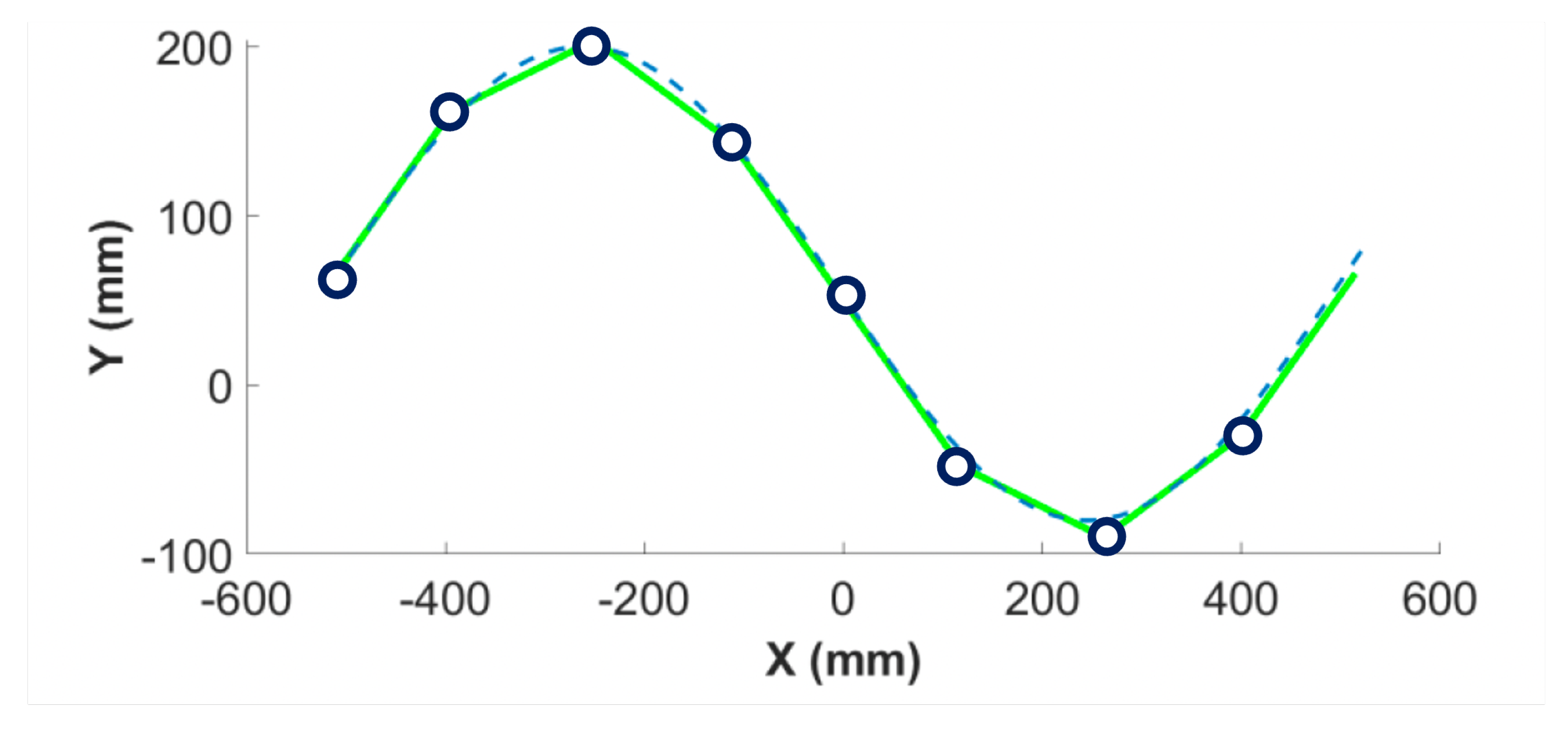

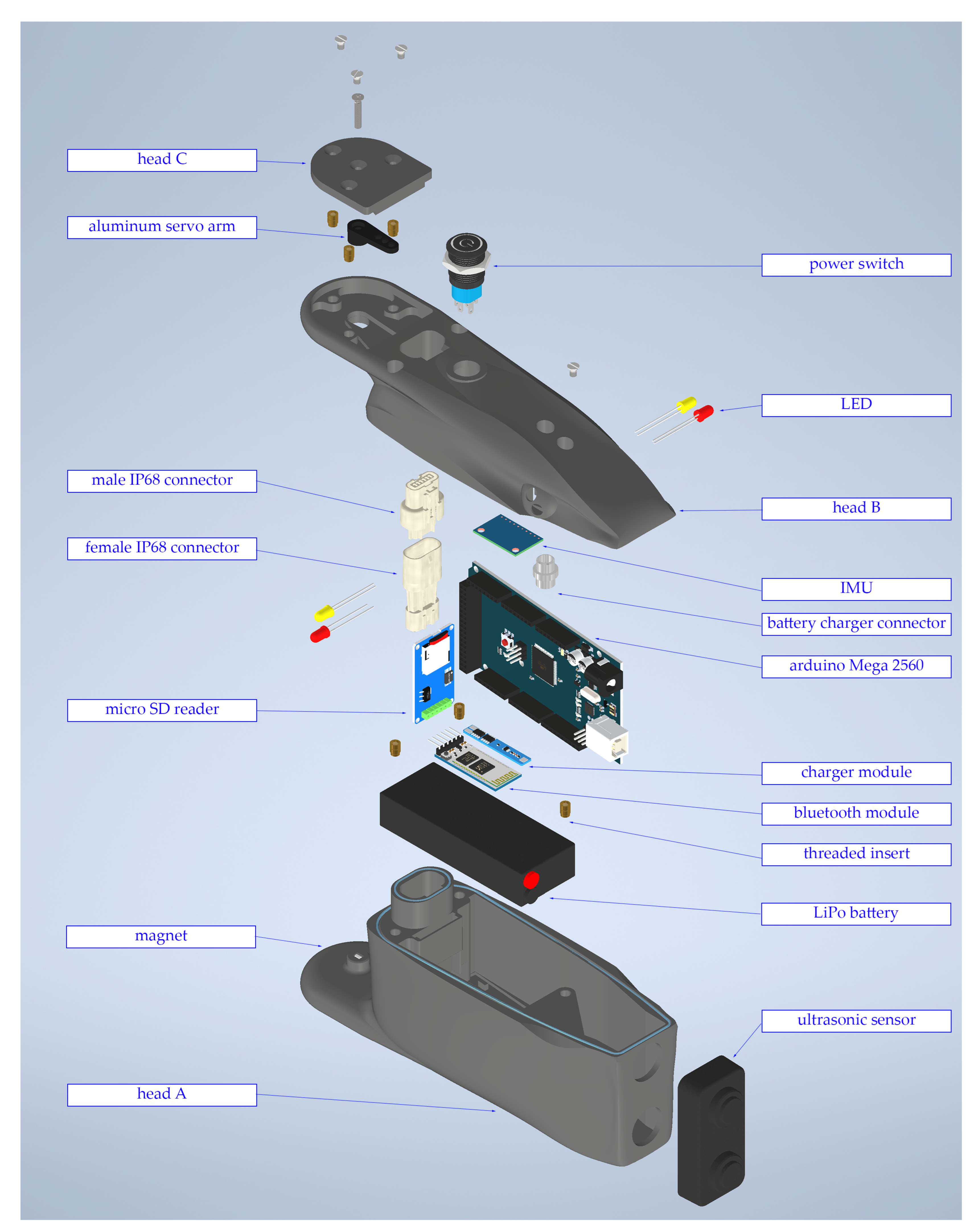
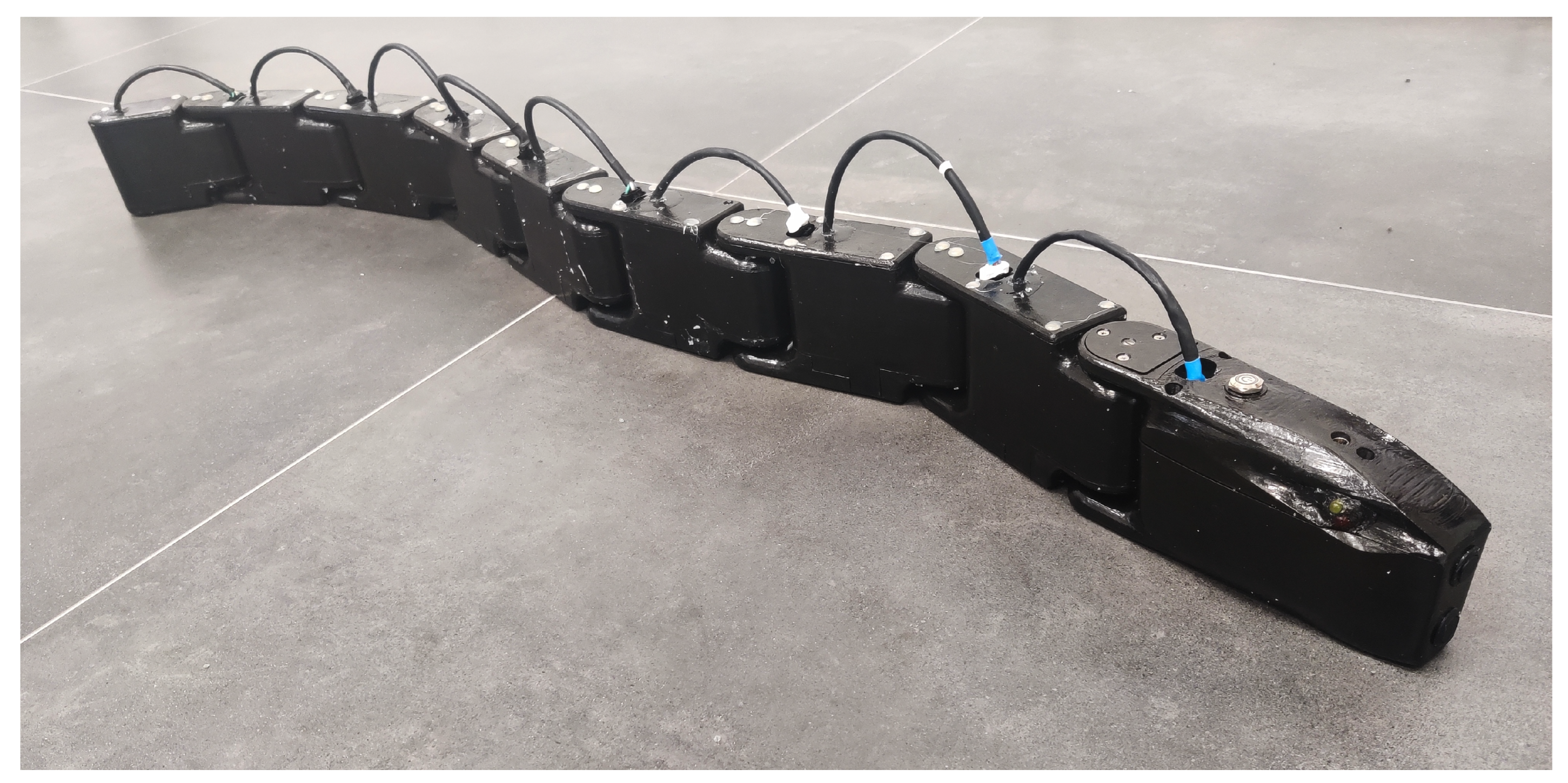
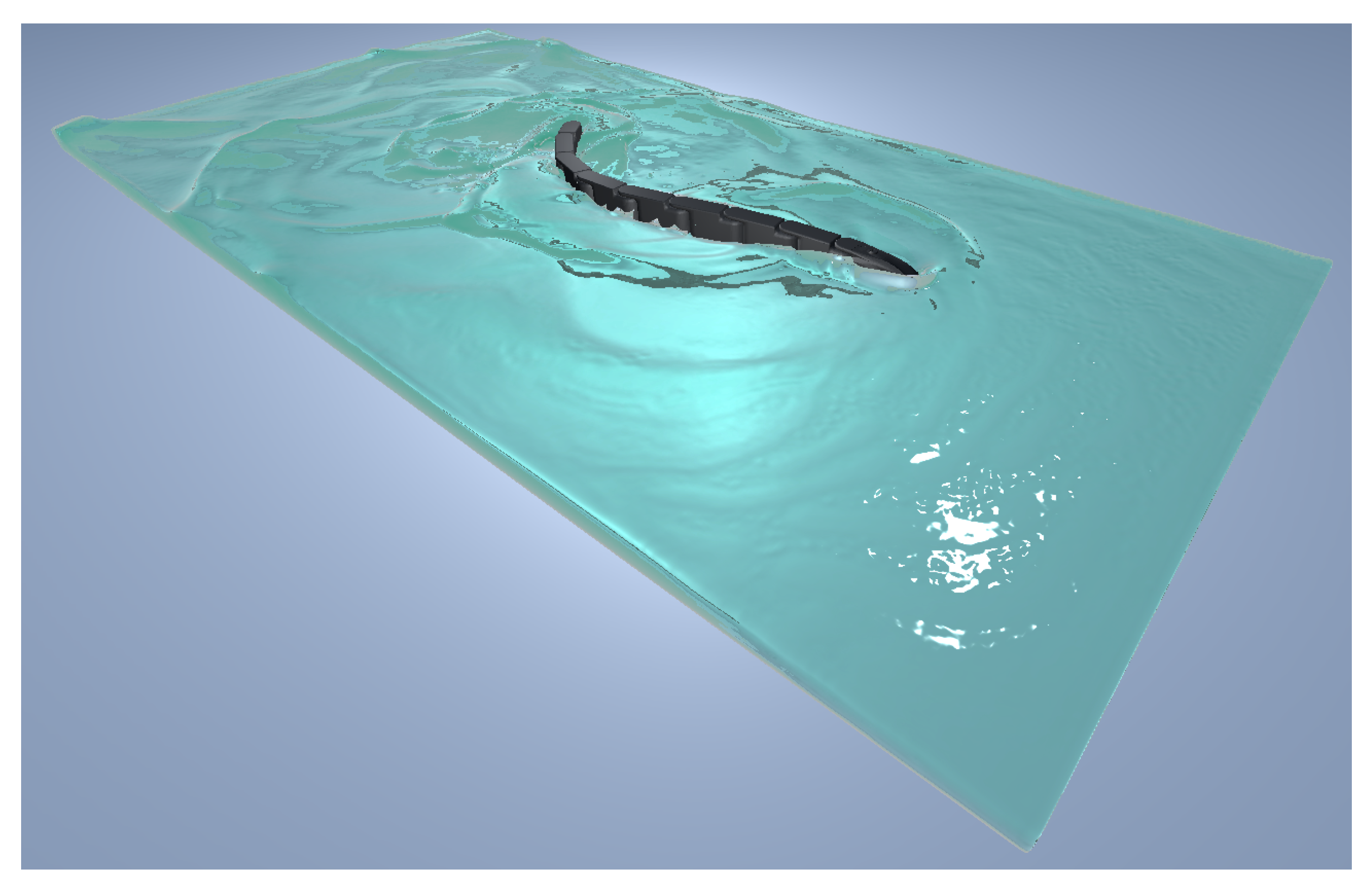
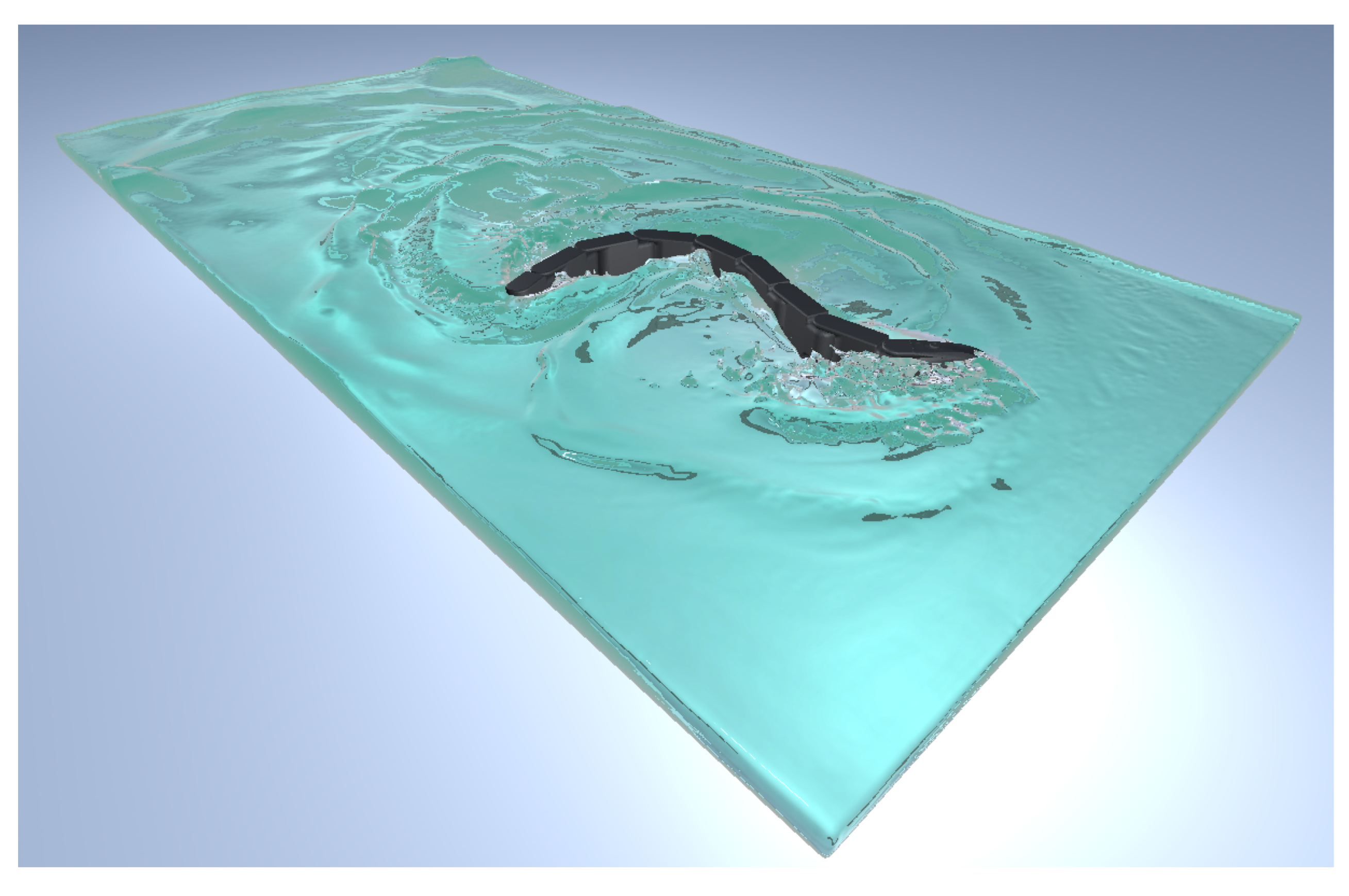
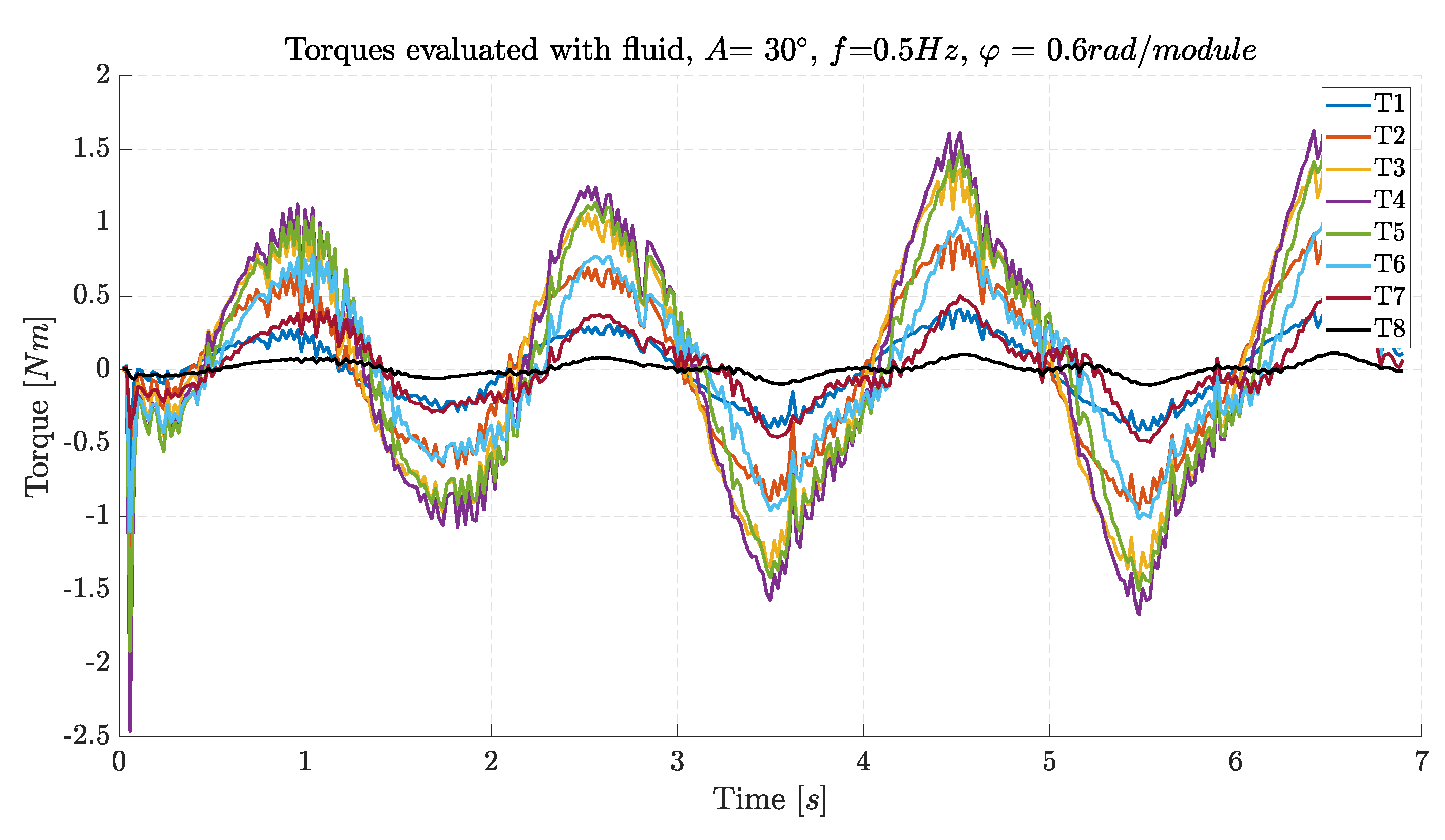


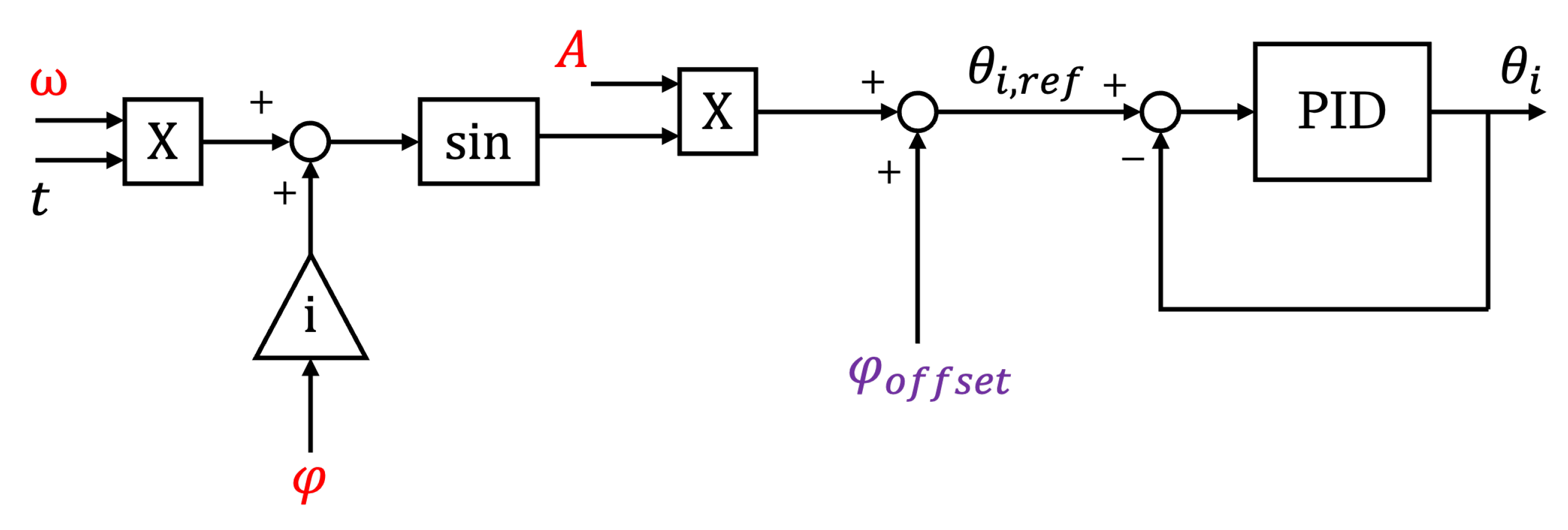
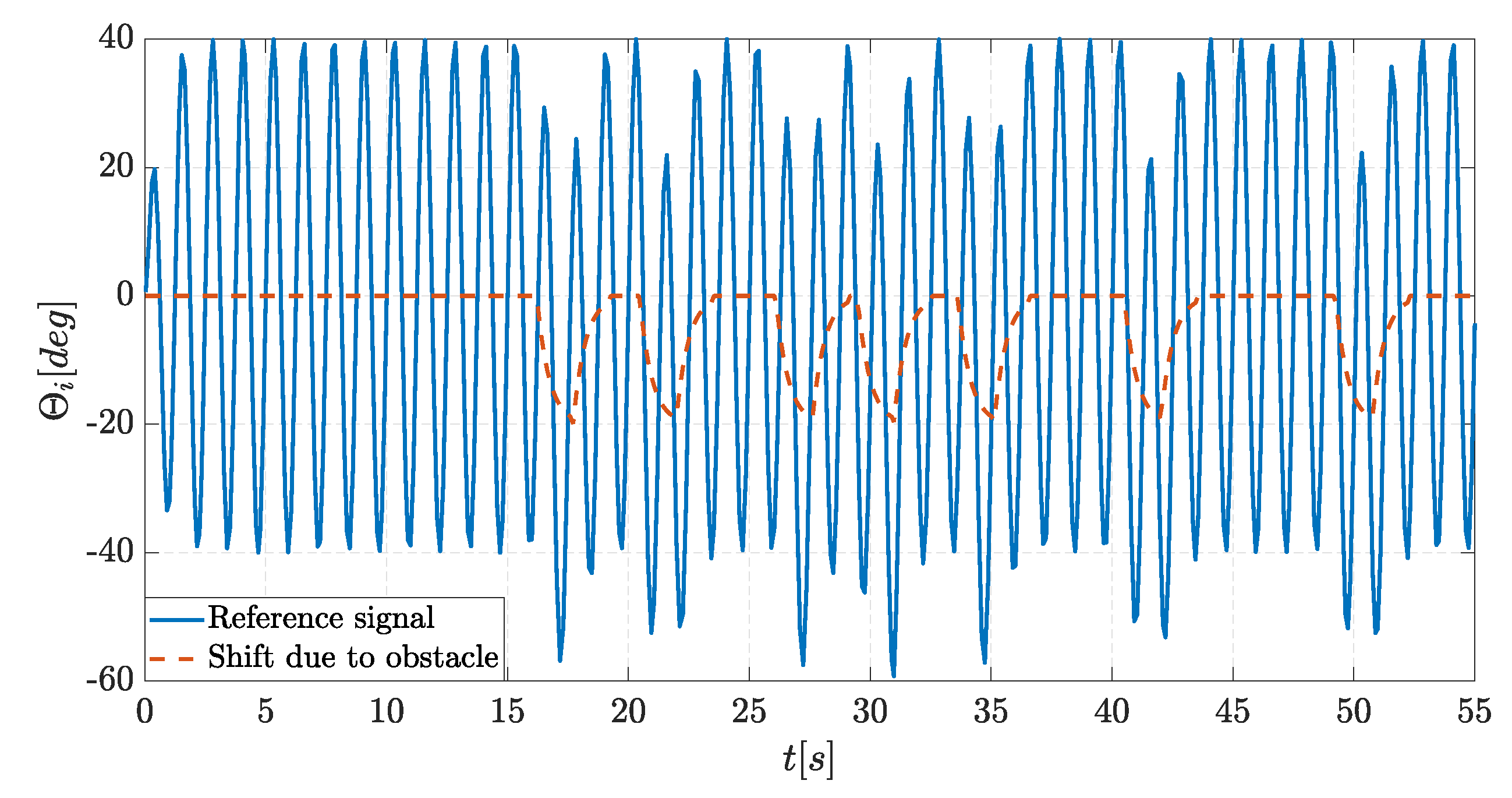
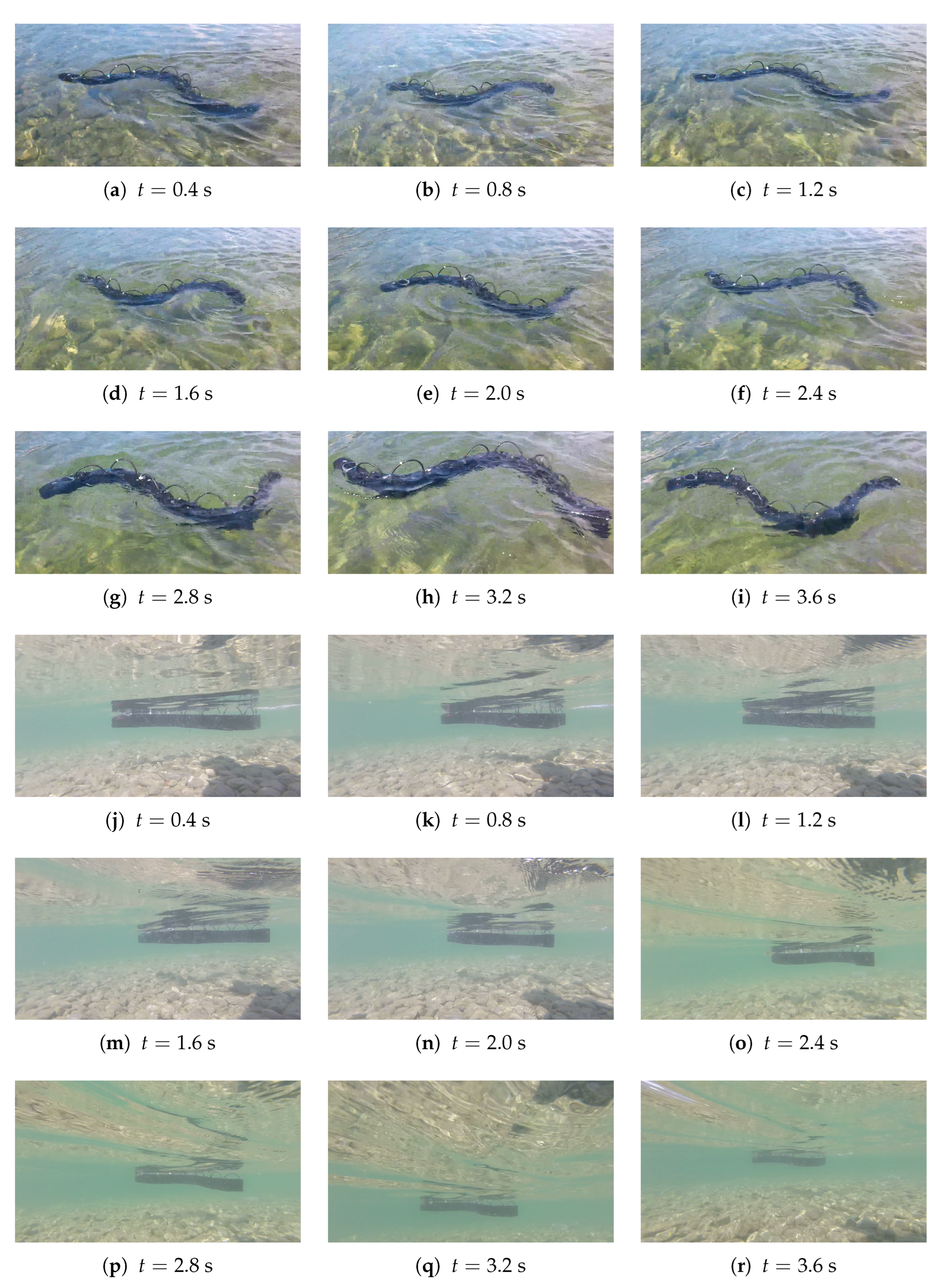
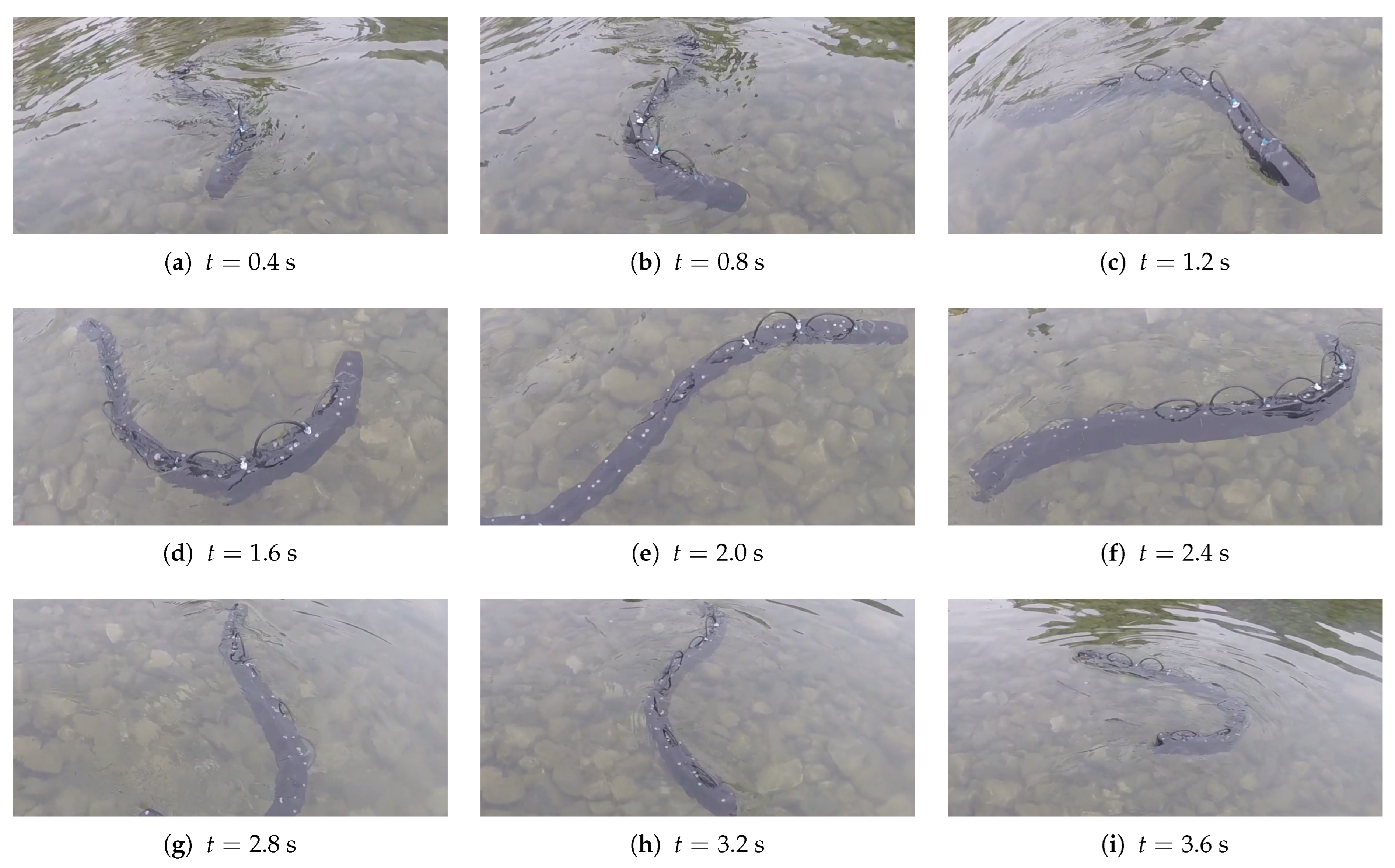

| Minimum | Maximum | Unit | |
|---|---|---|---|
| A | 10 | 90 | deg |
| f | Hz | ||
| rad |
| A | f | |||
|---|---|---|---|---|
| Hz | rad | 0.18–0.24 m/s | 0.23 m/s | |
| Hz | rad | 0.24–0.27 m/s | 0.22 m/s | |
| Hz | rad | 0.35–0.42 m/s | 0.30 m/s | |
| Hz | rad | 0.32–0.39 m/s | 0.25 m/s | |
| Hz | rad | 0.30–0.32 m/s | 0.23 m/s | |
| Hz | rad | 0.24–0.27 m/s | - | |
| Hz | rad | 0.37–0.44 m/s | - |
Disclaimer/Publisher’s Note: The statements, opinions and data contained in all publications are solely those of the individual author(s) and contributor(s) and not of MDPI and/or the editor(s). MDPI and/or the editor(s) disclaim responsibility for any injury to people or property resulting from any ideas, methods, instructions or products referred to in the content. |
© 2024 by the authors. Licensee MDPI, Basel, Switzerland. This article is an open access article distributed under the terms and conditions of the Creative Commons Attribution (CC BY) license (https://creativecommons.org/licenses/by/4.0/).
Share and Cite
Bianchi, G.; Lanzetti, L.; Mariana, D.; Cinquemani, S. Bioinspired Design and Experimental Validation of an Aquatic Snake Robot. Biomimetics 2024, 9, 87. https://doi.org/10.3390/biomimetics9020087
Bianchi G, Lanzetti L, Mariana D, Cinquemani S. Bioinspired Design and Experimental Validation of an Aquatic Snake Robot. Biomimetics. 2024; 9(2):87. https://doi.org/10.3390/biomimetics9020087
Chicago/Turabian StyleBianchi, Giovanni, Luca Lanzetti, Daniele Mariana, and Simone Cinquemani. 2024. "Bioinspired Design and Experimental Validation of an Aquatic Snake Robot" Biomimetics 9, no. 2: 87. https://doi.org/10.3390/biomimetics9020087
APA StyleBianchi, G., Lanzetti, L., Mariana, D., & Cinquemani, S. (2024). Bioinspired Design and Experimental Validation of an Aquatic Snake Robot. Biomimetics, 9(2), 87. https://doi.org/10.3390/biomimetics9020087





